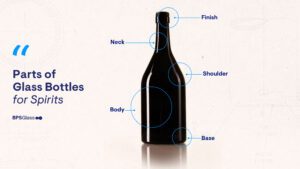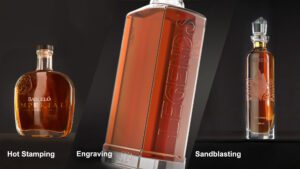What is Beverage Packaging?

Packaging for food and beverages provides protection, tamper resistance, physical, chemical, or biological requirements for the food and beverages. Furthermore, food packaging promotes food nutrition, ensures rapid and consistent food distribution throughout the value chain, and reduces post-harvest losses.
Packages are used depending on the beverages served. Alcoholic beverages are usually done in bottles and cans, while non-alcoholic beverages are typically served in bottles. The growing popularity of non-alcoholic beverages is expected to increase the demand for bottles in beverage packaging. Bottles are also very convenient to carry and store, makes it a preferable choice among buyers. These factors are expected to boost bottle packaging demand in the global industry.
Packaging Materials Used in the Food and Beverage Industry
Rigid packaging, flexible packaging, paper packaging, wood packaging, vegetable fibers and textile packaging, metal packaging, beverage cans, aerosols, and glass are some types of packaging materials used in the food and beverage industries. Beer packaging, carbonated soft drinks (CSD) packaging, energy drinks packaging, ready-to-drink ice tea packaging, and alcoholic drink packaging are the most common applications for these packaging materials in the beverage industry. It is common to find that a single product necessitates more than one type of packaging.
Rigid packaging containers offer distinct advantages like high impact strength, stiffness, and barrier properties. Rigid packaging is commonly used in the beverage industry to store carbonated beverages, water, juices, teas, sports drinks, nutritional drinks, baby food, and frozen food.
Flexible packaging – This type of packaging consists of bags, envelopes, pouches, sachets, wraps, and other similar items made of easily yielding materials like film, foil, or paper sheeting that takes on when filled and sealed in a pliable shape.
Paper packaging – Paper and board are flexible packaging materials. Paper packaging can be made of parchment paper, for example, or it can take the form of bags to package loose foods. Carton board is used in various applications, including liquid and dry foods, frozen foods, and fast food. The corrugated board has many applications, including direct contact with food (e.g., pizza boxes) and secondary packaging.
Wood packaging – This type of packaging is used to pack, transport, handle, preserve, present, and add value to the following food products and industries: Fruit and vegetable, fish and seafood, wines and spirits, oils, cheese and dairy, meat and conditioned meat, bread and bakery, dried fruits.
Materiales de embalaje utilizados en alimentos y bebidas
Metal packaging – This type of packaging is made of two materials: aluminum steel sheets and bin. Steel sheets are plated with tin and organic lac, which prevents direct contact with food. As a result, corrosion-resistant metal packages are created. It is manufactured as corrosion-resistant metal packaging. Metal materials can be formed by modern production techniques and advanced machines, developing easy-to-open lids, various surface designs, high solidity and tightness, and other important factors for the preference of metal packaging. Aside from food products, metal packaging is also used for the packaging of paint and chemical materials. The metal packaging creates a barrier that is impervious to light, air, and water. It is also insect and rodent-resistant.
El envoltorio retráctil, el envoltorio de manga retráctil, el envasado en atmósfera modificada, el envasado de alimentos en bandeja sellada, el embolsado de forma, llenado y sellado vertical (VFFS), el envasado en cartón plegable y el envasado en cajas y bandejas corrugadas se utilizan para envasar alimentos y bebidas.
Ha habido un aumento en la demanda de alimentos listos para el consumo, incluidas las comidas preparadas para microondas para los consumidores de poco tiempo. El mercado de envases de bebidas está impulsado por la creciente demanda de té, agua embotellada y refrescos carbonatados (CSD).
¿Cómo afectan a las bebidas los materiales utilizados en la fabricación de los envases?
La resiliencia y la comodidad de los envases de metal están impulsando el crecimiento del segmento. El aluminio o el acero se pueden utilizar para envases de bebidas. Ambos se utilizan para el envasado en el caso de bebidas no alcohólicas. La compatibilidad química del producto y el tipo de material de empaque es esencial para la calidad del producto. Debido a que el aluminio y el acero son inertes en reactividad con bebidas no alcohólicas, son los mejores materiales para su empaque. Las latas de metal también se utilizan en el envasado de cerveza. Los envases de latas para cerveza se están volviendo más populares porque, a diferencia del vidrio, eliminan los daños causados por la luz y la oxidación y mantienen la cerveza fresca durante más tiempo. A los clientes se les suelen servir bebidas en latas y botellas de metal.



